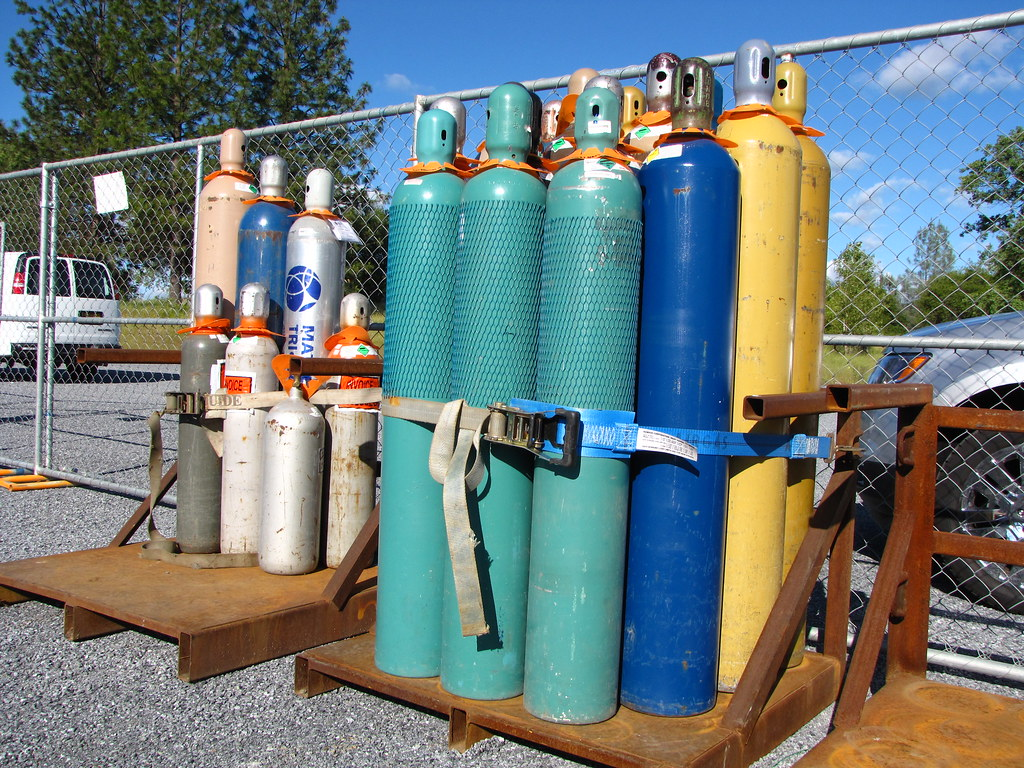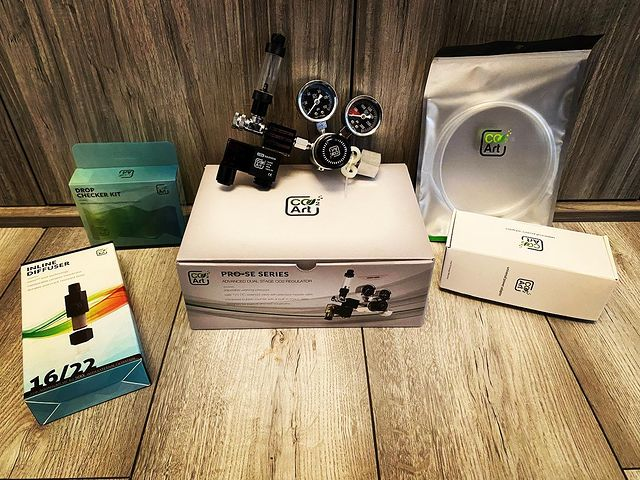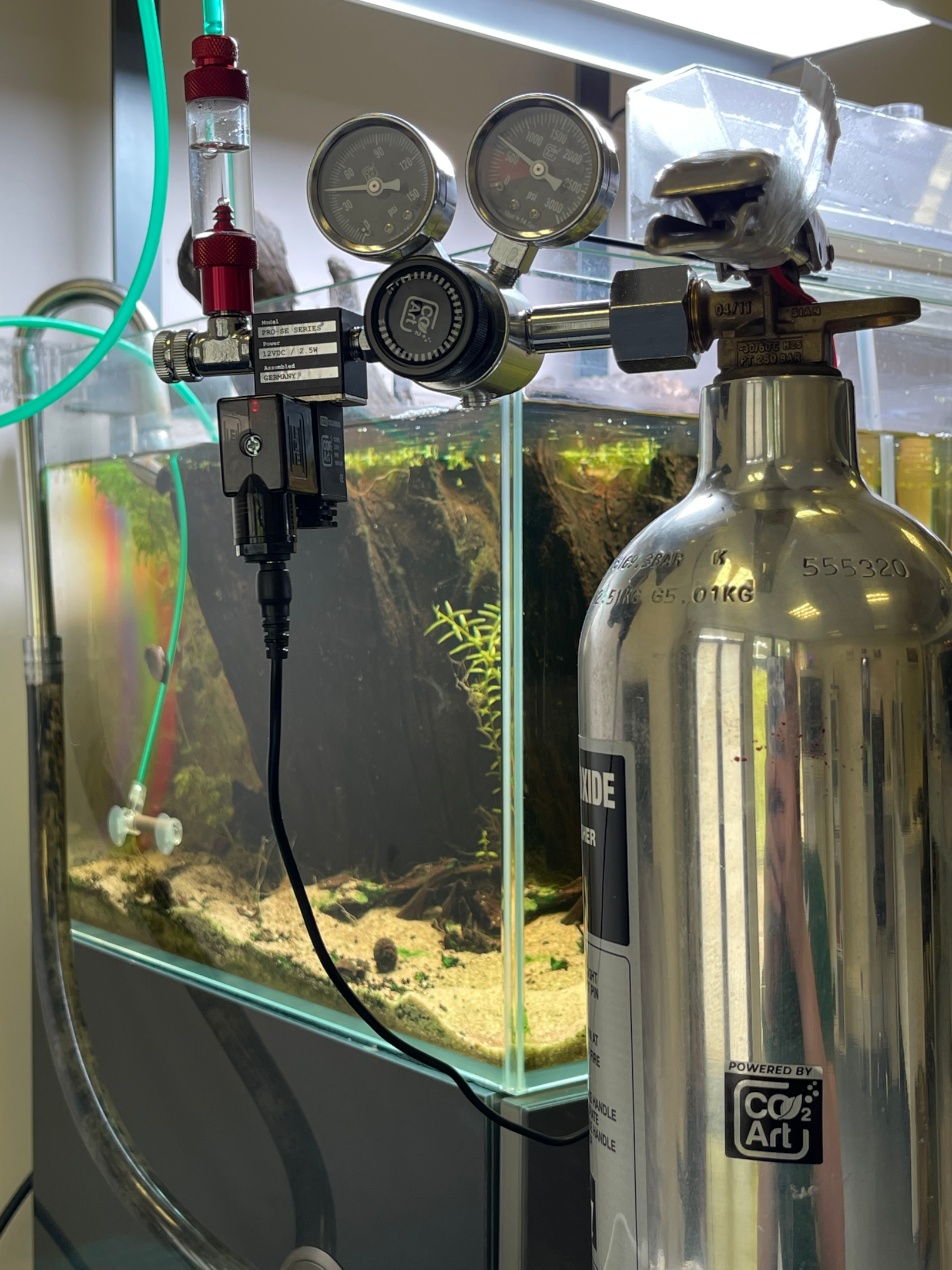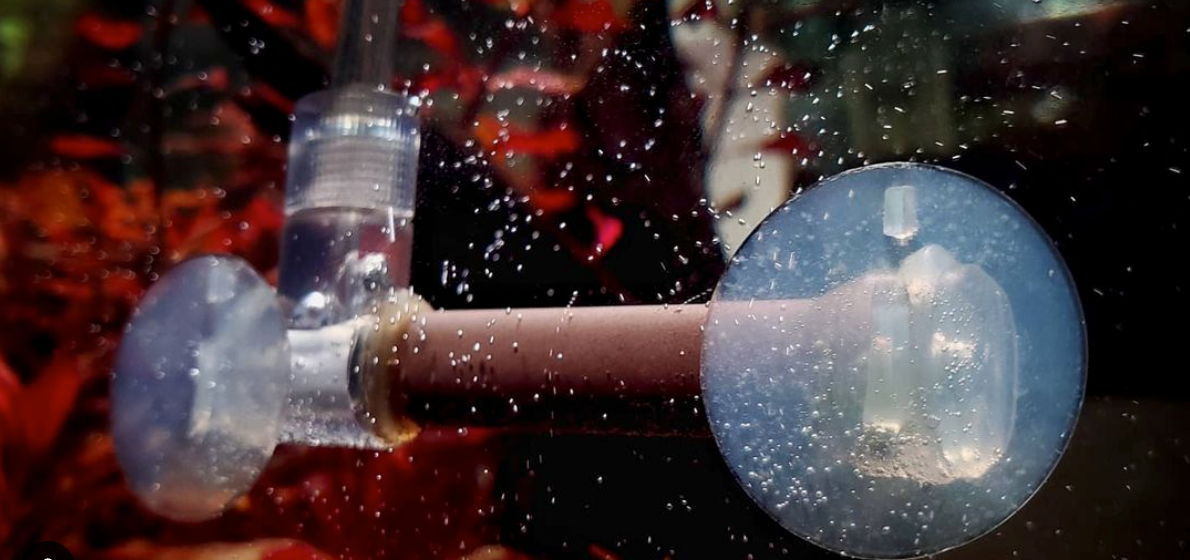How long can a CO2 tank last?

People looking to get a Carbon Dioxide system for their planted tank seem to be hesitant for a number of reasons. The main reason would be fear of overdosing the tank and killing the fish. With proper knowledge though that fear will slowly be replaced with understanding and confidence. The second most common reason is budget. This is another big obstacle they would encounter as they seem to think that the whole CO2 system is expensive. Apart from getting the Carbon dioxide tank itself, expect to purchase the essential CO2 regulator, solenoid valve, specialized air hoses, diffusers, CO2 drop checker, bubble counters and check valves. Compared to a D.I.Y. CO2 generator which can be basically created from recyclable materials such as a soda bottle, the CO2 tank is expensive. There is a big difference though between a D.I.Y. CO2 generator and a commercial CO2 tank. A CO2 tank may be a bit pricey but the initial investment will pay 10 folds in the long run.

How long does a CO2 cartridge last?
CO2 systems, the ones commonly sold in aquascaping shops come in different shapes and sizes.

The most commonly used are the 2-liter and 4-liter tanks. Now that may not sound a lot but given that we are supplying the CO2 in bubbles per second, a 2-liter tank could take months before one would need to have it refilled. These sizes should be sufficient for home use-that is of course the hobbyist has only 1 to 2 medium sized tanks to supply CO2 with.
A medium-sized tank’s (60-90 cm) CO2 requirements can still be measured in bubbles per second. 2-3 bubbles per second is not a lot of gas. One 90 cm tank could probably consume a 2-liter tank of CO2 in 3-4 months, depending on the usage. High-light setups as already known does require more CO2 since plant photosynthesis is way faster compared to low or medium lit tanks and of course larger tanks would naturally need more CO2. Medium sized, low to medium lit tanks would only require 1-2 bubbles per second and sometimes even less. It would take about 3 months for hi-tech, hi light set ups and 4 to 5 months for low light set ups for a 2 liter CO2 tank to be fully consumed. That means the hobbyist only needs to take care of the CO2 once every 3 months or once every 4 months at most. That saves a lot of work and time compared to a D.I.Y. CO2 generator wherein one would need to change or refill almost every week and sometimes even sooner.


Carbon dioxide tanks are almost maintenance-free. This hobby requires a lot of time, the plants in your aquarium will adjust to any conditions. It does not require heavy back-breaking work but small, time-consuming things like testing the water, reading the temperature, adjusting levels of nutrients etc.d In general, the less time the hobbyist spends on the CO2 system, the more time he has for other tasks to improve the tank.
The initial cost in acquiring a CO2 system is admittedly a bit high but refilling it really does not cost a lot. Compared to a Biological D.I.Y. generator or a Chemical D.I.Y. Generator the cost of having a CO2 cylinder refilled with the gas is lower if not the same. Biological D.I.Y. generators would consume yeast, gelatin (optional) and half a kilo of brown sugar every week to get it going. That would mean the hobbyist would have spent 4 kilos of brown sugar in 2 months, not to mention the time spent every week in mixing a new batch to replace the old mixture. Chemical D.I.Y. generators would need baking soda and citric acid to generate CO2. It would consume a quarter of a kilo of citric acid and a quarter of a kilo of baking soda every 5-7 days. That is roughly 2 kilos of baking soda and 2 kilos of citric acid every 2 months and like the Biological D.I.Y. generator, one would need to spend time every week in creating a new batch to replace the old one.
D.I.Y. setups can be a bit messy and are also prone to malfunctions a.k.a. explosions. There are instances that a hose would be clogged up and the bottle cap or the hose would explode spewing that slimy, sticky, particularly smelly liquid everywhere. When not done properly there will also be instances where the mixture could leak into the tank. If unnoticed and left unchecked this could kill plants and fish as these mixtures contain too much acid, sugar and alcohol. D.I.Y. set ups take getting used to.
The key word is ‘convenience’ when it comes to commercial CO2 tanks. You can choose to get the smallest or biggest tank. It is a plug-and-play set up. Attach the tank to the solenoid valve then attach the solenoid valve to the tank and plug it to a timer and it would turn itself on and off every single day. Some fine-tuning may be required to get the desired number of bubbles per second but that is about it. It functions all by itself for as long as there is power. Some of the largest for aquascaping can only be supplied by CO2 cylinders since naturally these tanks would require more gas.
There are instances wherein there could be malfunctions but those are one in a million. No system in the world is perfect. Until someone can invent a failsafe CO2 system wherein the solenoid valve or some type of valve would automatically shut off if there is a leak or too much CO2 is coming out or generally if there is something wrong, we would have to make do with checking the system every once in a while. When checking the CO2 make sure the hoses are firmly attached and there are no leaks. Leak tests for CO2 setups are practically the same with any other pressurized setups that involve gas.
Check the timer as well. Cheap, China-made timers and gauges have a reputation of working beautifully for a few months and then suddenly acting up- but everything is made in China nowadays so might as well do the regular checking. When it comes to the parts of the system (solenoid valves, hoses, diffusers), make sure to get the quality ones. There is no sense in purchasing something at a cheaper price only to have CO2 leak out. If this were the case, one would likely end up having the CO2 tank refilled every week and the question "how long does a CO2 tank last" wouldn't be rather optimistic then. It could be worse, a malfunction in the solenoid valve could end up killing everything in the tank and setting the tank back all the way to day 1.
A CO2 system requires a thicker, more resistant hose.

Meet our bestseller! The CO2-Resistant Tubing 4/6mm - a MUST-HAVE for a CO2-supplemented aquarium!
A regular silicone rubber air hose simply will not do. CO2 reacts with silicone rubber. CO2 and pressure make the hose brittle. A regular silicone rubber air hose would only last a few months at best when used on CO2 injections. Luckily, there are high-pressure hoses readily available in aquascaping shops and pet shops.
When using CO2 tanks, might as well take advantage of the pressure it creates. Use atomizers and inline diffusers as opposed to glass diffusers. Atomizers turn the gas into micro bubbles by allowing the CO2 to pass through porous ceramic material. This process requires high pressure which could not be normally supplied by D.I.Y. set ups.
The use of CO2 injection would actually depend on the aquarist himself. Some aquarists love the D.I.Y. methods due to the challenge they bring. For those who are not that busy, The D.I.Y. method is the best way to go. One would learn a lot when using D.I.Y. set ups. These setups teach not only basic applications of chemistry but physics and biology as well. Not all people however, can dedicate a huge chunk of their weekly or daily time to get this going. For people who prefer convenience, having a CO2 cylinder is a very huge advantage.
D.I.Y. setups are great for small to medium-sized tanks
Larger tanks, anywhere from 50 gallons and up would be better off supplied with a commercial CO2 tank. The amount of CO2 that can be supplied by D.I.Y. set ups are limited to a few bubbles per second otherwise the aquarist would end up replacing the solution everyday which would then become too much work and impractical. D.I.Y. ‘s pressure is also limited so one cannot use devices that would need high pressure. Such devices like the atomizer are exclusively used together with a CO2 tank. Some glass diffusers need high pressure as well though most would not need it. The finer the bubbles that can be produced by a diffuser, the higher the pressure it needs. Regular glass diffusers can run with D.I.Y. CO2 generators but they would create larger bubbles therefore rendering it less effective compared to the ones that produce finer bubbles.
Environmental factors also play a role in determining how long your CO2 cylinder lasts
Extreme temperatures, humidity levels and other conditions may affect how quickly the gas depletes from the cylinder. Make sure to store your 60 L CO2 cylinder in a cool, dry place away from direct sunlight and other sources of heat. It's important to practice proper maintenance and usage.
Summary
There are advantages and disadvantages to each setup but it is best to know each of the method’s strengths and weaknesses before finally taking the plunge into this aspect of the hobby. No matter what is chosen, it will all have the same effect if used properly.



